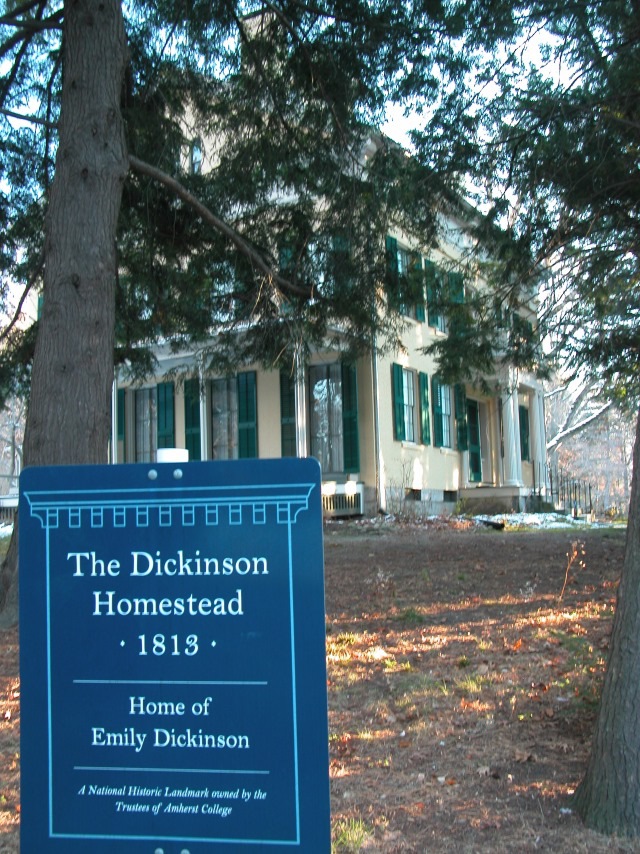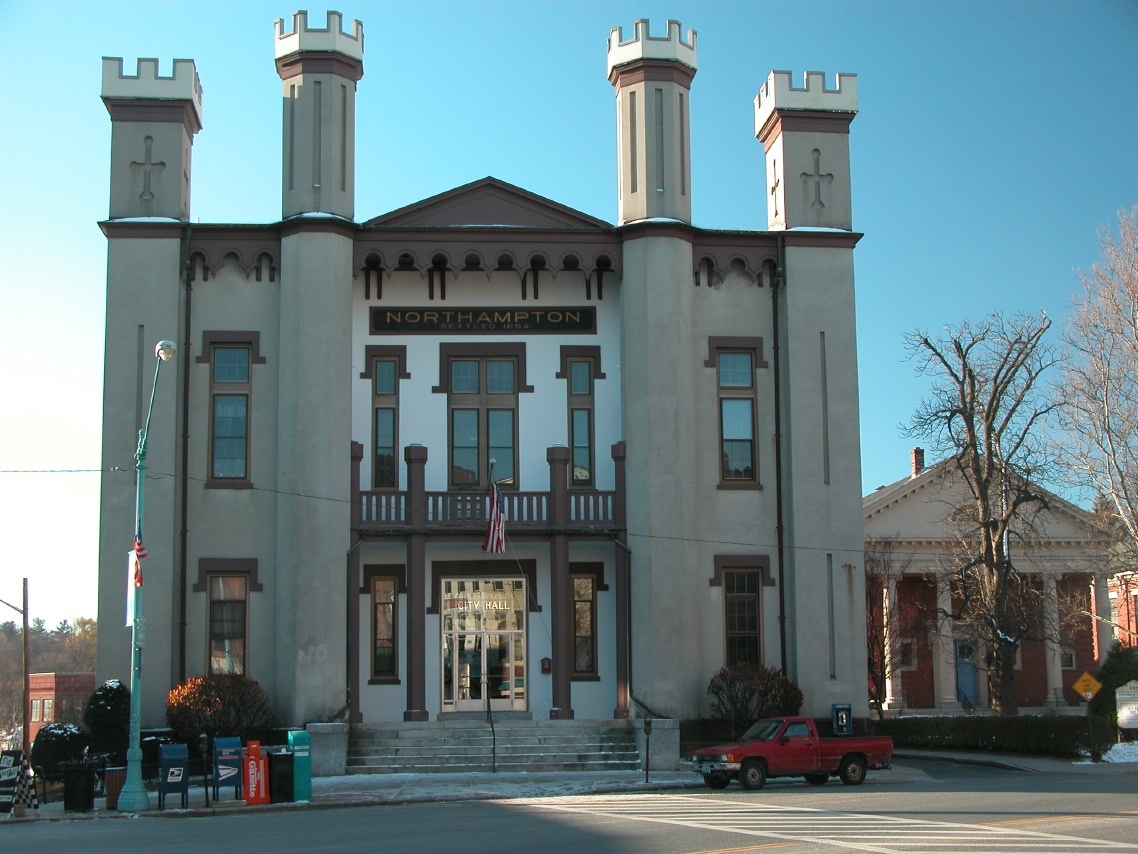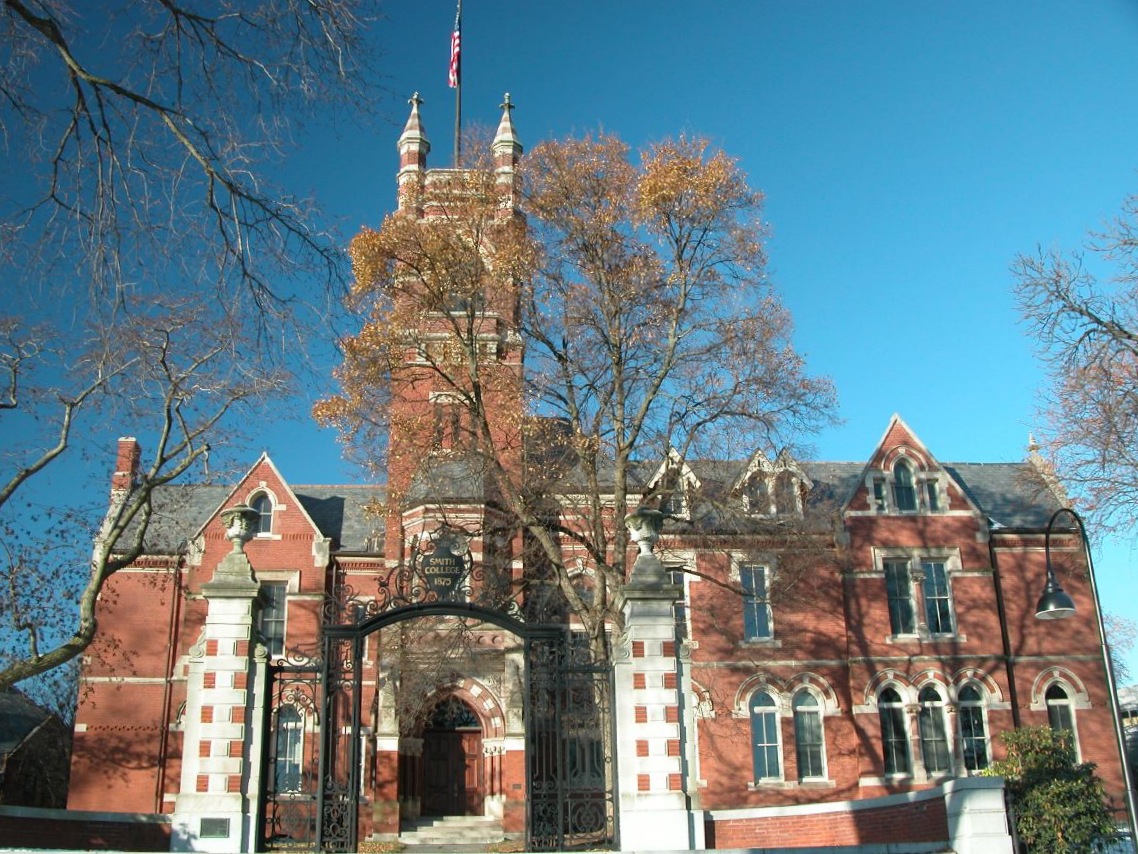Pioneer Valley, Massachusetts
The Connecticut River flows along the Pioneer Valley past historic Deerfield, the college towns of Amherst, Northampton, and South Hadley to the city of Springfield, famous for manufacturing, transportation, and Dr Seuss.
The great Connecticut River glides through western Massachusetts from north to south. The "Great Tidal River" was a highway to the interior for English pioneers in the 1630s, giving this region its name.
West of Worcester and Quabbin Reservoir, east of the Berkshire Hills, Massachusetts' Pioneer Valley is marked by Greenfield to the north and Springfield to the south, connected by the valley thoroughfare of Interstate 91 (map).
The alluvial riverbed soil is rich, and English settlers were farming at Springfield as early as 1636. The river provided easy transport to markets in New York and Philadelphia.
Centered on Hampshire County, this "Five College area" is an educational center boasting four colleges—Amherst, Hampshire, Mount Holyoke, Smith—and the University of Massachusetts.
Transportation
Amtrak trains and Peter Pan buses serve Springfield, the transportation nexus of central Massachusetts, 26 miles south of Amherst (map).
From Springfield you can make your way to Amherst by buses of the Pioneer Valley Transportation Authority.
Distances from Amherst:
—Deerfield MA: 16 miles (26 km) north
—Northampton MA: 10 miles (10 km) west
—South Hadley MA: 10 miles (16 km) south
—Springfield MA: 26 miles (42 km) south
By Car
Follow MA Route 9 east from Northampton, or I-391 and MA Route 116 north from the Mass. Turnpike (I-90).
Where to Stay
Hotel accommodation in the Pioneer valley are very much geared to college life. Most visitors come on college business or pleasure, and when big events such as homecomings, major football matches and graduations draw big crowds to any of the five colleges, rooms are scarce throughout the area. Check availability as soon as you know when you'll be here, and reserve in advance.
Use this Hotel Map with prices to find just the lodgings you want in the Pioneer Valley:
Amherst
Famous for the college of that name and for the sprawling University of Massachusetts, Amherst is the quintessential New England college town.
Amherst, 80 miles (129 km) west of Boston and 40 miles (64 km) north of Hartford CT, is also the birthplace of poet Emily Dickinson, "the Belle of Amherst." Her house is now a museum open to visits.
The center of Amherst is the broad swath of tree-bordered green lawn called the Town Common, bordered by South Pleasant Street (MA Rte 116), Boltwod Avenue, Main Street and College Street (MA Rte 9).
What to See & Do
Dickenson Homestead
Poet Emily Dickinson was born in Amherst, lived for a time in Philadelphia and Washington, but returned to Amherst to live and write in seclusion. Her house is now a museum of the Emily Dickenson Museum, and is open to visits.

Emily Dickenson Homestead, Amherst MA
Amherst College
Take a tour of Amherst College, founded in 1821.
University of Massachusetts - Amherst
The sprawling campus of the University of Massachusetts (UMass - Amheerst) takes more time to see, but there is a free PVTA bus line you can use, and an excellent campus map. Ask at the information booth on the Common, or at the information desk in the UMass Campus Center.
UMass, by the way, was founded in 1863 as Massachusetts Agricultural College. Present enrollment on the Amherst campus is about 25,000. Compare that to Amherst College's 1,600.
Pretty Country
The roads between Amherst, Northampton, and South Hadley form a triangle and are some of the prettiest in the area.
Farther along the road you may want to stop at Atkins Frarms Country Market. Cider, pumpkins, apple picking, maple sugar products, and locally grown produce are all here. Atkins has grown so large from its humble beginnings as a farm stand that it now stays open daily, year round.
Mount Holyoke Range State Park
Continuing along the road, you'll climb into the tiny Holyoke Mountain Range, the only range of mountains in the Pioneer Valley that runs east-west. Well-marked hiking trails bin the Mount Holyoke Range State Park begin from the visitor center here.
Once over the "notch" (mountain pass), you'll coast down toward South Hadley.
Deerfield
About 15 miles north of Northampton and Amherst on US Route 5 and MA Route 10 is Historic Deerfield, a fascinating vestige of earlier times in Massachusetts' Pioneer Valley. It's one of the most gracious, best-preserved colonial and Federal-style towns in the country.
The town's original long main street (called, creatively, The Street) shaded by enormous trees and lined with historic houses, churches, a comfy inn, and the renowned Deerfield Academy private school, has been preserved and is now a museum of early American history.
You can spend as little as a half hour here, but it makes more sense to plan a morning or an afternoon looking at the various house museums, enjoying the colonial and early American ambience, and perhaps enjoying a meal or even an overnight at the Deerfield Inn.
From Boston, follow MA Route 2 west, then US Route 5/MA Route 10 south. From Springfield and the Mass. Pike, follow I-91 north, then MA Route 116 east and US Route 5/MA Route 10 north.
What to See & Do in Deerfield
Follow the signs to turn west from US Route 5/MA Route 10 to reach The Street (also called Old Main Street) in Old Deerfield.
Historic Deerfield
Deerfield's history, architecture and culture is preserved by Historic Deerfield, which maintains many of the museum houses in the town.
At the northern end, the Wright House (1824), beautiful in itself, holds collections of Chippendale and Federal furniture, American paintings, and Chinese export porcelain.
The Ebenezer Hinsdale Williams House (1816) next door is also open to view.
Across The Street on the west side, Ashley House (1730) was the minister's residence in old times, and by the look of it, this wasn't such a bad life.
Next to Ashley House, Sheldon-Hawks House (1743) was home to the same family during two centuries. The Sheldons, rich Deerfield farmers, were able to buy the best available land at the time.
A bit farther south, the Henry N Flynt Silver and Metalwork Collection (1814) holds the museum's collection of silver, pewter, and other base metals.
The Flynt Textile Museum (1872) behind it houses a large collection of textiles, costumes, and needlework from America, England, and continental Europe.
Allen House (1720), next to the south, is furnished with items made in Boston and the Connecticut River Valley.
Stebbins House (1799-1810) is a wealthy landowner's residence, with rich period furnishings.
In the center of the village, the Visitor Center at Hall Tavernis where you park your car, buy your admission tickets, pick up brochures and maps, and use the toilets.
Across the street, the Deerfield Inn is good for a drink, a meal or a bed. Just south of it are the US Post Office and the First Church of Deerfield.
South of the village center, Deerfield Academy is on the west side of The Street.
On the east side, Frary House and Barnard Tavern (1740-95) look like one building, but in fact are two. Barnard is a favorite with children because some of its rooms have exhibits that are okay to touch.
Go east from the Barnard Tavern to reach the Memorial Hall Museum open every day May through October.
Memorial Hall Museum
Memorial Hall (1798) was the original home of famed Deerfield Academy, still one of New England's most prestigious private schools. Less than a century after its construction, Memorial Hall became a historical museum of Pocumtuck Valley life, both Indian and Puritan. Local furniture, pewter, tools, textiles, decoration, and Indian artifacts, arranged in period rooms, make up the collection.
There are special collections for carved and painted chests, local embroidery, musical instruments, and glass-plate photographs (1880-1920) by the Allen sisters, Deerfield's talented early photographers.
The most dramatic exhibit is the Indian House Door. Colonial Deerfield survived two Indian massacres and numerous other battles in its early days.
On February 29, 1704, during the French and Indian War, the Sheldon House (now gone) was attacked, its door suffering chops and bashes. The attackers finally hacked a hole in the center, through which they got at the inhabitants. The door is pretty dramatic.
Back on The Street, Wells-Thorn House (1717-51), next to the south, has a series of period rooms extending from the frontier to the Federal periods.
Dwight House (1725) was actually built in Springfield MA, and moved to Deerfield in 1950. Local furniture and a period doctor's office are the attractions.
Behind the Dwight House is the Flynt Center of Early New England Life, with more historical exhibits on the period from which Old Deerfield dates.
Northampton
Home to Smith College, Northampton is the shopping and restaurant mecca of the central Pioneer Valley.
Though much smaller than nearby Springfield, the Pioneer Valley town of Northampton, Massachusetts (map), has a bright, busy, youthful ambience because of the many college students.

City Hall in Northampton.
They're not all from Smith College, located right in the town center. Many come to Northampton from surrounding college towns such as Amherst and South Hadley for shopping or to dine in one of Northampton's many good restaurants.
The pretty campus of Smith College, founded in 1871, is worth a stroll.
The Greater Northampton Chamber of Commerce, 99 Pleasant Street, Northampton MA 01060 (tel 413-584-1900) will answer your questions.
Smith College
The pretty campus of Smith College, founded in 1871 and located just at the edge of Northampton's downtown shopping district (map), is worthy of a stroll.
Renowned as one of Massachusetts' finest undergraduate colleges for women, Smith boasts many famous alumnae including former First Lady Barbara Bush, French chef Julia Child, author and aviator Anne Morrow Lindbergh, Margaret Mitchell, author of Gone With the Wind; former First Lady Nancy Reagan, feminist writer Gloria Steinem, and poet Sylvia Plath, among many others.
Smith College Museum of Art
The fine Smith College Museum of Art holds works from Africa, the Americas, Asia and Europe; Medieval and Renaissance, modern, contemporary, and art by women. There's a good collection of French Impressionists, and a fine North American collection of top names from the 19th and 20th centuries.
Campus Tours
You can arrange for a campus tour by contacting the Office of Admission, 7 College Lane, Northampton MA 01063 (tel 800-383-3232 or 413-585-2500).
South Hadley
South Hadley is a small town most famous as the home of one of New England's most highly respected women's colleges.
Mount Holyoke College
Mount Holyoke College, 50 College Street in South Hadley b,ears the distinction of being the USA's oldest women's college, founded in 1837.
The lovely campus was originally designed by Frederick Law Olmsted, who fashioned many beautiful parks and forests during the 19th century.
The campus boasts a sports complex, an equestrian center, a Japanese teahouse and meditation garden, and a unique handcrafted classical organ (one of the last designed by Charles B Fisk) in the chapel.
The College Art Museum is open year round to campus visitors, and the Summer Theater offers plays in a tent on the green Tuesday through Saturday nights.
The enrollment at Mount Holyoke is about 1,900 women. The college is a member of the Five College Consortium of the Pioneer Valley, comprising up to 30,000 students.
Skinner State Park
On the way from South Hadley to Northampton on MA Route 47 (a gorgeous drive especially in the spring and fall), take a detour to Skinner State Park at the top of Mt. Holyoke (the mountain, not the college). On a clear day from the park's Summit House you'll have a great view of the winding Connecticut River, the fertile valley's patchwork of farmland, church and college steeples, and distant mountain ranges.
Springfield
At the southern end of the Pioneer Valley, Massachsetts' third largest city is famous for the historic Springfield Armory (1777), and for its history of mechanical innovation: the motorcycle was invented here, and Rolls-Royce cars were once built in its workshops. Then there's basketball, which was invented in Springfield. More...


